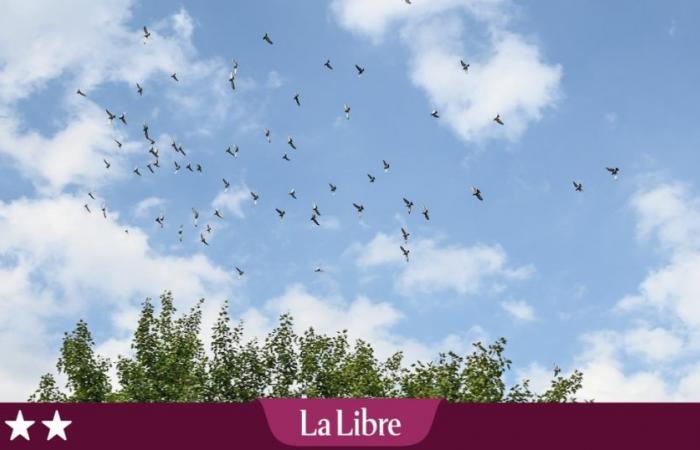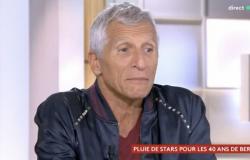With The Seer of Étampes (L’Observatoire, 2021), he published a powerful novel on the excesses of cancel culture. With Hut, his new novel, he tackles an even bigger theme: the possible collapse of our civilization when it has exhausted its resources. He denounces that everything was already written 50 years ago, but that we preferred it business as usualhoping that new technological developments would save us.
The Meadows Report
Abel Quentin’s novel is based on the famous Meadows report, commissioned by the Club of Rome from four MIT scientists, including Donella Meadows and Dennis Meadows, and published in 1972. It was titled “The limits of growth in a finite world.”
Based on systems theory and aided by the emergence of large computers, the curves obtained by the calculations of these experts were clear: the world cannot support exponential growth in a necessarily limited space. The endless growth in consumption, demographics and pollution, coupled with the progressive depletion of our resources, is leading us straight into the wall. Scientific progress may just delay the deadline, but at some point, shortages, overpollution, global warming, etc. will occur. will lead to collapse.
Bruno Colmant: “I have fought the idea of degrowth for a long time. Today, I believe that a citizen debate is necessary”
In short, it was, for this report, “stop growth or the world will die”. And 50 years later, despite late efforts, reality largely corroborates the predictions of MIT researchers.
Report 21
For his novel, Abel Quentin transformed the Meadows report into Report 21, published in 1972, the result of four Berkeley researchers this time. The Meadows couple became the couple Eugene and Mildred Dundee. There is still a Norwegian mathematician, this time called Johannes Gudsonn, and he added a Frenchman, Paul Quérillot.
Pierre Wunsch (BNB): “I am absolutely not in climate denial, on the contrary”
As in reality, the Rapport 21 made a lot of noise before various lobbies, helped by often ultraliberal economists, tried to tear it apart. Abel Quentin sums up these decades of denial as follows: “It was not difficult to guess that Report 21 would not change the face of the world. The awakening of consciousness would come up against a simple fact: man was almost incapable of representing the radical change of a situation. […] The post-war man, the carefree and glorious man, the champion and beneficiary of unbridled growth could not do this, because nothing had ever been brutally taken from him.”
The entire first part of the novel recounts in a breathtaking manner how and why this famous report was not really followed by effects. Even if it was made clear from the outset that the sooner we reacted, the easier it would be.
gullAnyone who believes that exponential growth can continue indefinitely in a finite world is either a madman or an economist.
Abel Quentin imagines that the Dundee couple continued to work towards ecological awareness, to end up dropping out and raising pigs (Abel Quentin imagines a very dramatic end for Eugène Dundee). Paul Quérillot chooses to deny his message and use his skills to enrich himself with an oil company.
We come across many real names in the novel, such as the Belgian Nobel Prize winner Ilya Prigogine, the mathematician René Thom and his theory of catastrophes or the cantor of “deep ecology”Arne Naess.
Go crazy
The second part of the book becomes completely romantic, recounting, at length, how a journalist sets off in the footsteps of the fourth man, Johannes Gudsonn who, himself, chose to flee, to isolate himself for a time in his “hut” (the title of the book), and go into half-scientific, half-esoteric theories about the end of the world, haunted by the Fibonacci sequence, where each number is the sum of the two numbers that precede it.
Abel Quentin writes: “Gudsonn was among the first to experience the anxiety that fear of collapse causes. At first, she was appeased by the fact that we were agents of change. This feeling of being active is very important. However, over time, the feeling of dread took over.”
In Quentin’s novel, Gudsonn joins the examples of mathematicians gone mad, such as the brilliant Alexandre Grotendhieck, but also Theodore Kaczynski, nicknamed “Unabomber” by the FBI, who became an anarcho-ecologist terrorist. The novelist quotes the writer Philip K. Dick, who said: “Going crazy is sometimes an appropriate response to reality.”
A pessimistic novel, but enlightening on the crucial issue that faces us.
⇒ Hut | Novel | Abel Quentin | The Observatory, 478 pp. €22, digital €15
EXTRACT
“The calculations were clear. To hope for a favorable outcome, these measures had to be taken simultaneously and immediately. In other words, it was necessary to immediately slow down global growth. And at the same time, introduce drastic birth control, added Eugène , worried, almost old no one wanted to laugh anymore, not even Mildred, the most cheerful of the four.






